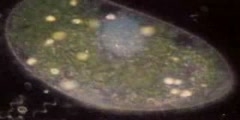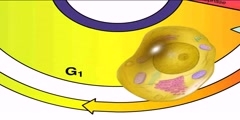Eukaryotic Cell Cycle | Biology | Genetics
A cell that contains membrane-bound compartments in which specific metabolic activities take place. Most important among these compartments is the nucleus, which houses the eukaryotic cell's DNA. It is this nucleus that gives the eukaryote – literally, "true nucleus" – its name. Eukaryotic organisms also have other specialized, membrane-bounded structures, called organelles, which are small structures within cells that perform dedicated functions. Eukaryotic cells are typically 10 to 100 micrometers across, or about 10 times the size of prokaryotic cells. Origin of eukaryotic cells The set of ideas most favored by biologists to explain how eukaryotic cells first came about is called the endosymbiotic theory. This theory is able to account well for the fact that two of the organelles found in eukaryotic cells, mitochondria and chloroplasts, have their own DNA that is completely distinct from the DNA housed in the nucleus. According to the endosymbiotic theory, the eukaryotic cell evolved from a symbiotic community of prokaryotic cells. Specifically, the mitochondria and the chloroplasts are what remains of ancient symbiotic oxygen-breathing bacteria and cyanobacteria, respectively, whereas the rest of the cell seems to be derived from an ancestral archaean prokaryote cell.
Channels: Genetics
Tags: Eukaryotic Cell Cycle Biology Genetics
Uploaded by: buraktube ( Send Message ) on 09-11-2010.
Duration: 4m 20s














